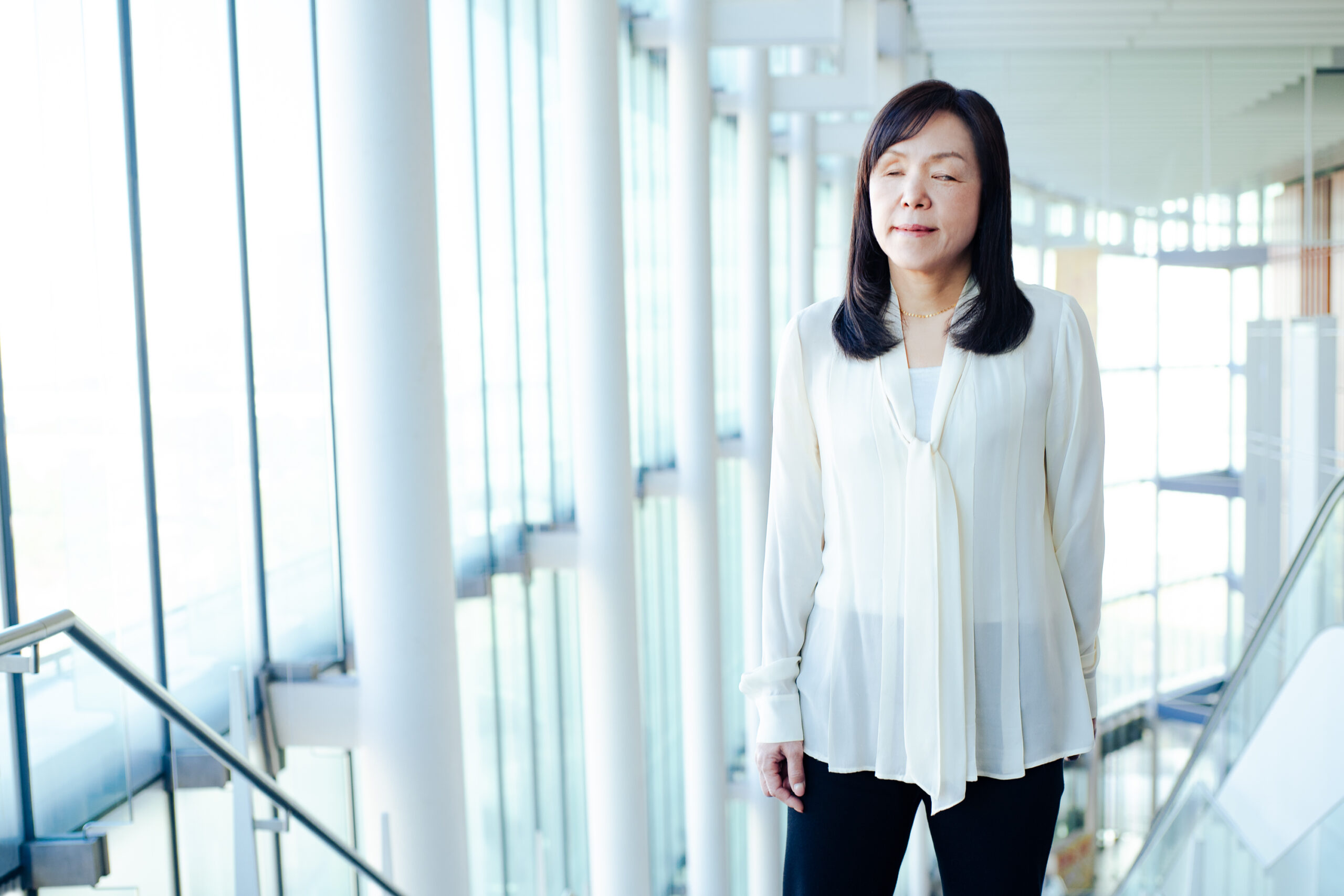PIONEER STORIES
Dr Asakawa: “Change is always challenging”
Fiona Slater
In this blog series we will share examples and reflections on best practices across the fields of informal and non-formal science learning, science communication and public engagement. Our aim is to share perspectives and initiatives that will spark ideas, dialogue, and meaningful change amongst our DiverSci Community. We are delighted to kick the conversation off with Dr Asakawa, Chief Executive Director of Miraikan, the National Museum of Emerging Science and Innovation in Tokyo, Japan.
Dr Asakawa began her career in Computer Science at IBM in the 1980s. She made significant contributions to Web accessibility through the development of digital braille and web-to-speech software. Throughout her career she has continued to create innovative approaches to accessibility within the field of AI navigation for blind and visually impaired people. Below, find out how the worlds of computer science, accessibility and state-of-the-art science communication collide.

Miraikan focusses on emerging science and innovation. What role do you think our Science Centres have in shaping future developments in Science, Technology, Engineering and Maths (STEM)?
Science museums can display and explore different areas of STEM, and then engage the public in dialogue – explaining the area in understandable terms. By doing so, we can increase the public’s science literacy, while at the same time, collecting ideas and questions from the public to pass on to STEM professionals. This, in turn, helps researchers, scientists, and engineers to be more aware of the public’s concerns, thereby increasing improvements in those areas. Science centres are hubs that bring together people from all walks of life, to listen, learn, and then, create the future.
You and fellow researchers at Miraikan Museum in Tokyo are still researching and developing technologies through your work in the Accessibility Lab. Can you give us some insight into what you are working on? What impact and application could this research have on museum and science centre visitors?
My current research focus is on the AI Suitcase, which is a navigation robot that will eventually help blind and visually impaired people navigate their environments. We are lucky in that we created the Accessibility Lab consortium to work together with various entities, including universities and companies. We are accelerating innovation and new technology. As a result, visitors, both sighted and visually impaired, can experience the AI Suitcase long before it’s available on the market, which serves to inspire everyone. People will learn that a robot can be part of the near future cityscape and, as it evolves, the AI Suitcase might be rented to visitors to enhance their museum experience. Museums can be the first venue to offer such an experience.
You have previously stated that “accessibility ignites innovation”. What are some of your favourite examples of accessibility tools which have been adopted across society.
Voice synthesis and voice recognition technology are just two examples. This technology was developed to meet the needs of people with disabilities. Early technology of voice synthesis provided stilted, robotic voices that were difficult and a little unpleasant to hear. But now the voices are very natural. Why? Because blind people patiently used the old system, continued to provide feedback and push for improvements. Those improvements were a necessity and that’s the mother of invention.
As Chief Executive Director of Miraikan, you have stated a commitment to diversity and inclusion. What does this mean to your organisation in practice — how does it influence your staff, your strategy, and your programs?
It is often difficult to introduce new concepts. The first step is to provide opportunities for the staff to learn, understand, and actually experience what I mean when I say diversity and inclusion. I encourage small steps. For example, showcasing the AI Suitcase. The staff were engaged and experienced this unfamiliar approach and that expanded their awareness. Change is always challenging. Now we are working on new, more inclusive exhibitions, and encouraging each exhibition to be as inclusive and accessible as possible.
Your work has involved lots of international travel. What is your favourite museum in the world, and why?
I am just beginning to explore the world of museums, and I’ve been lucky to visit a number of European museums and a few in North America. Although it’s much too soon to answer, I can say the more I encounter, the more I like. Many have visually impaired access, many have other methods aimed at increasing inclusivity. That gives me great hope for the future.